19. Feb 2018 - DOI 10.25626/0081
Dr. Monica Ciobanu is Professor at the State University of New York in Plattsburgh in the Department of Criminal Justice. With a PhD in Sociology from the New School for Social Research, she has published extensively in the area of democratization and the politics of memory in Romania. In 2014-2015 she was awarded the Chancellor’s Award for Excellence in Scholarship and Creative Activities by the State University of New York. Currently she is working on a manuscript on the memorialization of the Stalinist repression in post-communist Romania. In fall 2017 she was a fellow in residency at the Imre Kertesz Kolleg.
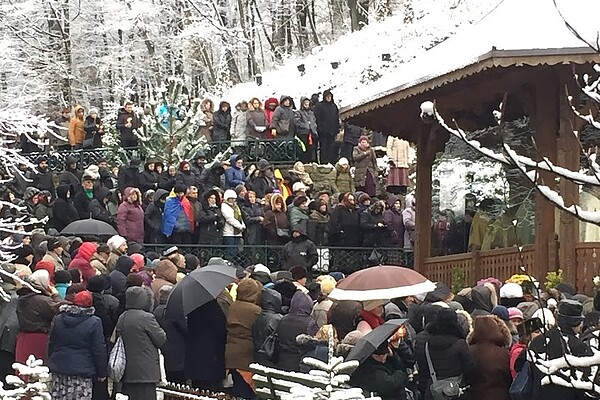
In December 2017 the Romanian public saw the closing of a “Commemorative Year of Patriarch Justinian and the Defenders of Orthodoxy in Communist Prisons”, which had been declared by the Orthodox Church of Romania (Biserica Ortodoxǎ Romȃnǎ – BOR). This special year has been marked by numerous commemorative services, public teachings and other religious events dedicated to the memory of Orthodox priests and other believers who had been repressed by the communist regime. During the difficult process of coming to terms with Nicolae Ceauşescu’s regime after 1989, the Church had remained relatively silent, despite recurring accusations of having collaborated with the secret police (Securitate) during the communist decades. Only in 2006, when the final report of a presidential Commission for the Analysis of the Communist Dictatorship in Romania confirmed some of the allegations, did the Church react more decisively. It commissioned a counter-report that emphasised the Church’s victimisation under, and resistance to, the communist regime.[1] It is this same narrative of the Church’s oppression under communism and its tireless struggle against the evils of atheism that finds its reflection again in the commemorative year 2017.
The official commemoration of former prisoners of Orthodox faith is all the more remarkable as it seems to associate the BOR with a rather controversial campaign known as the ‘prison saints movement.’ Supported by various civil society organisations, intellectuals and segments of the clergy, this movement has for many years been attempting to lobby the Church Synod to canonise former political prisoners who demonstrated particularly zealous religious devotion in the face of torture and state repression. This mission has, however, also come under strong criticism, given that many of the former prisoners that have been proposed for canonisation were affiliated with the fascist Iron Guard (legionaries) in the interwar period. This far-right political movement and later political party was notorious for its fascist and anti-Semitic ideas, which were mixed with extreme Orthodox Christian devotion.
These historical ambiguities are well-known in present-day Romania, and are also reflected in the state’s redress policies towards former victims of repression, from which these former prisoners are excluded. Nonetheless, their glorification among certain circles provokes recurring disputes between right-wing nationalist groups and those who fear the return of an extremist anti-Semitic movement and ideology. Indeed, Romanian Holocaust survivors (often represented by the Elie Wiesel National Institute for the Study of Holocaust in Romania), have warned against what they see as a growing popular cult around the ‘prison saints’, often accompanied by public displays of legionary symbols.[2] Again, the state has responded to these concerns by passing an amendment (emergency ordinance No. 217/2015)[3] to the existing Holocaust denial law of 2002 (OUG 31/2002), that incorporated a legal definition of the Iron Guard movement as a fascist and criminal organisation, and prohibited public displays of any symbols connected to this movement.
Proponents of the ‘prison saints movement’, however, are not impressed by this law. They argue that their concern is not with political convictions of former prisoners, but with their religious resilience. It is precisely the mixing of questions regarding justice for communist-era victims and historical memory more broadly with religious and mystical claims that has put the Church in a difficult position as it struggles to clarify its own stance on the matter. In 2015, for the first time since 1989, BOR began to consider the canonisation of one former prisoner – Arsenie Boca – by setting up a special committee to review the case. This and the already mentioned “Commemorative Year” seem to indicate that the Synod is assuming some responsibility in this debate.
The term ‘prison saint’ was first used by Nicolae Steinhardt (1912–1989), a Jewish writer and publicist who, while incarcerated in Jilava prison in 1960, converted to Orthodoxy. In his memoir Jurnalul Fericirii (The Diary of Happiness, 1991), Steinhardt referred to his fellow political prisoner Valeriu Gafencu (1921–1952) as “a saint”. Gafencu, a member of the Iron Guard youth, had been imprisoned in 1941 following a legionary rebellion during Marshall Ion Antonescu’s dictatorship. He was initially sent to Aiud prison, where he became a principal member of a group of legionaries known as the “mystics”, known for their complete devotion to a highly spiritual and completely non-material faith. Gafencu’s image as a “saint” has also been emphasised in the writings and testimonies of other political prisoners who praised his altruism.[4] Gafencu and others like him had often already lived a clandestine existence and been imprisoned before the war. During the 1930s, the legionary (Iron Guard) movement was seen by the authorities as a threat to the democratic state, due to its violent acts against Jews and anti-system actions, including two political assassinations. Between 1940 and 1941, the Iron Guard formed an unholy alliance with the Nazi ally Marshall Ion Antonescu, yet this was eventually brought to an end by a legionary rebellion, and the subsequent imprisonment of a large number of its followers.[5] It is estimated that in total, around 280,000 and 380,000 Jews perished during the war (both during the alliance with the Iron Guard and then from 1941 to 1944 under Antonescu).
However, the strong Orthodox and mystical message of the Iron Guard and its criticism of the corrupt political establishment gained them many followers and sympathisers, including youth, segments of the clergy and some reputable interwar intellectuals such as Nae Ionescu, Mircea Eliade, Petre Ţutea and others. Some of the Aiud mystics, managed to survive, in some cases for more than two decades, in communist prisons.[6] Along with other political prisoners, they were released in 1964, when the last ‘counterrevolutionaries’ were pardoned. According to the authorities, their initial adherence to a politically extremist right-wing ideology had been transformed into a purely spiritual and religious system of values and beliefs which had a positive influence on other political prisoners.
Another group of former political prisoners today seen as ‘prison saints’ consists of individuals who were subjected to the ‘re-education through torture experiment’ in the Piteşti prison between 1948 and 1951, a measure that led to the death of 22 inmates. This experiment was primarily designed to re-educate the ‘class enemies’ (mostly legionaries) in Marxist principles of the socialist revolution. Through psychological manipulation and physical torture, the victims of the Piteşti experiment were forced to renounce their families, friends, political and religious beliefs and, ultimately, become themselves perpetrators and active agents of re-education against fellow prisoners. This diabolic scenario orchestrated by the regime sought to fundamentally compromise the legionary movement and its leaders, and also to destroy their own personal sense of worth.[7] But according to personal and witness testimonies, after a debilitating moral collapse (cǎdere), many were capable of resurrection and renewal of their humanity (înǎlţare). This was described as a miraculous salvation that could have only been made possible by the rediscovery of prayer and a return to God. Later, many of the survivors of Piteşti described the ‘re-education’ as a struggle between dehumanization and martyrdom, stressing that they ultimately won over the forces of evil.[8] Some found retrospective salvation and forgiveness by choosing a spiritual life in the priesthood or monastic orders. This included individuals like Gheorghe Calciu, who later became an outspoken critic of Ceauşescu’s regime (1925–2006). Their choice of life path mirrored the monastic principles of an ascetic life in the service of God that had been earlier propagated by the Iron Guard during its interwar history. It also became the source of a cult of the dead.
In fact, this cult has resurfaced in the 2000s in the context of the ‘prison saints’ phenomenon. The alleged discovery of the remains of victims that were never properly buried after being tortured in Piteşti, and also in Gherla and Aiud, aroused public opinion. Media outlets willing to feature sensationalist stories, including Antena 3 and TVR1, have also contributed to what has become an interest in supernatural miracles.[9] Some Orthodox priests (joined by believers and researchers involved in exhumations) argued that exhumed body parts are similar to the relics of saints, and have attributed to them miraculous curative powers. The growing number of believers who participate in pilgrimages to such sites indicates an increasingly popular cult of the ‘prison saints’. Some of the most popular destinations include former prisons such as Aiud, Gherla and Prislop monastery. The latter, which attracts the highest number of visitors, is directly connected to the person of Father Arsenie Boca (1910–1989), whose case for canonisation is currently under review by a committee appointed by the Synod in 2015.
The principal actors who have insistently advocated for the canonisation of former prisoners with the Orthodox Synod are primarily religious conservative civic associations, some alleged Christian intellectuals, and segments of the clergy. Several associations have become visible in the public arena as a result of their initiatives and lobbying. Among them is The Prisoner Saints Foundation (Fundaţia Sfinţii Ȋnchisorilor), known mostly for taking custody of what has remained of the Piteşti prison and for transforming it into a memorial. The Arsenie Boca Christian Foundation (Fundația Creștină Arsenie Boca) has been proactive in recruiting many followers of Boca. Besides promoting his cult, the Foundation is also actively engaged in propaganda supporting culturally conservative, religious and nationalist values. The Professor George Manu Foundation (Fundaţia Profesor George Manu), named after a well-known physicist and former political prisoner, disseminates materials about the martyrs (mǎrturisitori) of communist prisons through its monthly online publication Permanenţe. The Rost Association (Asociaţia Rost) also pursues its aim of a moral and spiritual rebirth of Romanians through its publishing house and newsletter.
Since the mid-2000’s, these foundations, and a number of Christian intellectuals, gathered around the Aeropag group led by the writer and theologian Danion Vasile, have pursued a more coordinated and persistent campaign to gather evidence demonstrating that there are credible candidates for canonisation. During conferences and other public debates, they have invoked the ‘prison saints’ as models for those who oppose today’s selfish consumerist society ruled by corrupt politicians. Journalistic, religious, academic and pseudo-academic publications create a narrative about the mǎrturisitori (the martyrs) which stresses their exemplary Christian lives in which some of them performed miracles, even beyond death. As ‘proof’ of such post mortem miracles, they cite eye witnesses to the exhumation of two former prisoners, Fathers Dumitru Lǎcǎtuşu and Evghenie Hulea, whose bodies were allegedly still quite intact despite the many decades they had been buried.[10] In all of this hyperbole about miracles and saints, the historical involvement of the mǎrturisitori with an extremist political movement engaged in violent criminal acts against the Jewish minority before the war is rarely, if ever, discussed. On the rare occasions that it is, promoters of the ‘prison saints movement’ are quick to point out that the legionary movement was not a fascist organisation at all, but rather an indigenous Christian, primarily spiritual, and entirely patriotic phenomenon.[11]
However, for a considerable amount of time, the BOR and its officials have expressed reservations in addressing the potential canonisation of political prisoners with a legionary past. The still ongoing official consideration of Boca’s beatification and the 2017 commemorative year mentioned at the beginning are, however, suggestive of a shift in the Synod’s approach to this issue. Although no obvious answer can be provided, a more detailed analysis of the 2017 commemorations and of Boca’s case may shed some light on this shift.
After 1989, the Church and Teoctist Arǎpaşu (Patriarch from 1986 until 2007), came under heavy criticism for their inability to challenge the demolition of churches, for the collaboration of some clergy with the secret police (Securitate) and, most seriously, for Teoctist’s public endorsement of Ceauşescu’s repression of the December revolution.[12] In response, the Church defended its actions by arguing that its own survival and the lives of the members of its congregation could have only been ensured by way of making certain minor compromises. However, the fact is that during communism, the Church could consolidate its position as the sole church denomination in the state. Moreover, between 1959 and 1989, no less than 19 saints were canonised. Today, the BOR has been quite successful in capitalising on these earlier achievements by downplaying its shortcomings and failures under communism. Given the weak performance of democratic institutions in Romania since 1989, and given the increasing levels of religiosity among the population, the Church has managed to remain one of the most trusted institutions over the past 25 years.[13]
In recent years, however, it seems that this reputation has been seriously tainted as a result of allegations of corruption and immoral behaviour involving both local priests and senior echelon clergy. After a deadly fire that occurred in October 2015 in the Bucharest nightclub Colectiv, public trust in the Church fell rapidly, from 90 per cent in 2003 to just five per cent in 2015.[14] This was mainly due to the BOR’s apparent failure to express sympathy towards the victims and their families. As a result, in late 2015 the much criticised spokesman Constantin Stoica was replaced by Vasile Bǎnescu, an intellectual theologian and television anchor for the state-owned broadcasting service Trinitas. Since then, the Church has been actively pursuing a diversionary public campaign disseminating a message of national-Christian martyrdom.
As the official title of the 2017 commemorative year indicates, the BOR is currently attempting to consolidate a narrative that defines its opposition to communism as a struggle to defend Orthodoxy from the evils of atheism.[15] According to this narrative, two principal forces in the past significantly contributed to the Church’s cause. First, the figure of Justinian Marina (1901–1977, Patriarch of the Orthodox Church from 1948 until his death) is recognized as the undisputed leader of this crusade. Secondly, the self-sacrifice and devotion of those who suffered persecution for their religious faith (as equated with Orthodoxy) at the hands of communist authorities is emphasised. On the surface, given Marina’s rather mixed record as head of the Church, especially during the late 1940’s and the 1950’s when the regime ruthlessly harassed, imprisoned and tortured both religious believers and clergy, this association seems puzzling.[16] However, both the BOR and the supporters of the ‘prison saints’ movement emphasise that Marina was an actual protector who ensured the survival of Orthodoxy under difficult circumstances. It has also been stressed that it was under his initiative in the 1950s that the Church could for the first time beatify several clergy and martyrs.
In 2017, the defenders of Orthodoxy (the mǎrturisitori or those who kept to their Christian faith despite coercion) were widely celebrated by local parishes, cultural organizations and institutions of higher education throughout the country. In collaboration with civic associations, Christian intellectuals and former political prisoners who promote the ‘prison saints’, and through its main media outlets (including the news agency Basilica, the state-owned TV station Trinitas run by the BOR, and the newspaper Lumina), the Church attempted to educate and inform the public about its many mǎrturisitori (estimated to number around 2,000).[17] Public events were held in October 2017 during which Patriarch Daniel awarded the Patriarchal Cross (the highest distinction conferred by the Church) to seven former political prisoners. Three of them, Nicolae Bordaşiu, Radu Ciuceanu and Demostene Andronescu, are known for their early ties to the Iron Guard (legionary) movement. According to Daniel, the seven represent “a special category” of mǎrturisitori during a time when many chose faith over their own safety.[18] This rhetoric relies on the idea that resistance to communism was primarily motivated by opposition to atheism, a narrative that has long been advanced by the ‘prison saints movement'.
Yet while the recent honouring of controversial figures by the Church may be read as a victory for the ‘prison saints movement’, the BOR has also shown considerable caution in their response to the movement’s demands. The extended and still ongoing process of reviewing one particular case of a former priest/prisoner, Arsenie Boca, can be taken as an example here, which I will briefly consider below.
Born in 1901 as Zian Boca to a peasant family in Vaţa de Sus, a small locality in the historical region of Transylvania which at the time was a part of the Austro-Hungarian Empire, Boca studied at the Faculty of Theology in Sibiu and then went on to study fine arts at the University of Bucharest. In 1935, he was made deacon. Seven years later, Boca became abbot at Brȃncovenau monastery. Here, he assisted Father Dumitru Stǎniloaie with the translation of the Philokalia (a collection of texts written between the fourth and fifteenth centuries for the purpose of providing spiritual guidance to Orthodox monks). In 1942, some ties between Boca and the legionaries imprisoned in Aiud are documented. Apparently, Boca provided them with texts of the Philokalia, which were smuggled into the prison by family members of the legionaries. In 1948 he was arrested several times by the communists for his alleged support of the anti-communist resistance, but rejected any accusation of affiliation with the Iron Guard. That same year, he was removed from the monastery at Brȃncoveanu and transferred to Prislop monastery. Many of his contemporaries attest to Boca’s charismatic personality and the extraordinary appeal he exerted in the region. In Prislop, thousands would come to hear Boca’s liturgy and to confess to him. This made the regime increasingly anxious. In 1951 he was arrested again and imprisoned. One of the most well-known miracles attributed to Boca dates back to this early period of his imprisonment: he is said to have teleported himself from the Poarta Albǎ labor camp in order to attend his mother’s funeral in 1951. He was released and returned to Prislop a year later. In 1959, however, the monastery was shut down and Boca was banned from monastic life. He moved to Bucharest and worked in menial painting jobs in various religious workshops. He spent the time between 1968 until his death painting Drǎgǎneşti church near Bucharest. Today, parishioners of this church testify to the miraculous powers of Boca’s paintings. Others, who knew him directly or indirectly, invoke Boca’s fortune-telling abilities, of which the most discussed, are those relating to his own death and the brutal December 1989 revolution that included the execution of the Ceauşescus.[19]
After 1989, intensive tabloid media coverage of Boca’s biography in conjunction with the emergence of the ‘prison saints movement’ transformed Prislop monastery (where Boca was buried) into the most popular destination of pilgrimage. It is estimated that per year the number of pilgrims reaches a million. The beauty of the landscape as well as the old historical tradition of the monastery give the place a special appeal. Prislop is located in the mountainous north-western region of the county known as Ţara Haţegului, and the monastery was founded in the fourteenth century by Father Nicodim (canonised in 1955). But it would be misleading to argue that Christian Orthodox devotion is the principal explanation for the ‘Boca phenomenon’. Journalists, sociologists, and theologians also point to other significant factors involved in this, such as the increasing popularity of rural and religious tourism (something that the Church is well aware of), the need for community and simply sheer curiosity. Besides, small and large entrepreneurs were quick to exploit Boca’s image (see picture). Boca artefacts, kitsch souvenirs and hundreds of books attributed to him (of which the most famous is Cǎrarea Ȋmpǎrǎţiei, 2006, or The Path to the Kingdom), are sold in Prislop and other places, as are volumes about him, witness testimonies as well as Boca’s prayers.[20] Regardless of what and how much of this can explain Boca’s popularity, it is doubtless that a real cult has emerged around him. A poll conducted in 2015 shows that more than 90 per cent of Romanians have heard of Boca and more than half of them believe that he should be canonised. Of these, more than 34 per cent name him a saint.[21]
The movement for Boca’s canonisation, which reached a peak in 2014 (including the online petition initiated by a journalist, Victor Roncea), and the official request to the Church submitted by the Association of Former Political Prisoners (Asociaţia Foştilor Deţinuţi Politici – AFDPR), could no longer be ignored. A year later, the Synod appointed a special committee to review the case. This committee is led by Metropolitan Laurenţiu of Ardeal (the Romanian designation for the historical region of Transylvania) and includes senior level clergy as well as theologians and historians. Their work is focused on considering how Boca’s religious ideas conform to the mainstream religious precepts of the Church, the credibility of testimonies regarding his prophecies and the gift of performing miracles.[22] And, last but not least, whether or not he was affiliated in any way with the Iron Guard. With respect to this, work in the Securitate archives and a collection of first-hand accounts has resulted in the publication of three volumes, entitled Pǎrintele Arsenie Boca în Dosarele Securitǎţii [Father Arsenie Boca in the Files of the Securitate].[23] This research has so far led to the conclusion that Father Arsenie’s ties with the legionary movement were circumstantial and not formalized in any way. This and the lengthy process of the canonisation review (as of this writing the case has not yet been settled), shows that the BOR is not willing to be affiliated in any way to an extremist ideology. Meanwhile, the Church is working hard towards restoring its reputation and popularity.
The analysis of the ‘prison saints movement’ indicates that Romania’s ongoing struggle to remember its past and construct a coherent narrative that includes both pre-war and communist history is far from over. As in many other instances when difficult pasts become politicised, ritualised or simply manipulated by the mass media or through other means of public representation, the case of former legionaries illustrates the difficulties in making clear distinctions between victims, heroes and villains. But the fact that right-wing religious groups, Christian intellectuals, and some segments of the clergy advocate for the rehabilitation of former Iron Guard political prisoners through calls for their canonisation, gives the debate a strong religious flavour. Given that Orthodoxy and a nationalist consciousness have always been closely linked throughout the country’s history, the disagreements surrounding the ‘prison saints’ could easily become misrepresented or oversimplified in public opinion. In this context, the Church faces the difficult challenge of addressing the particular demands of religious groups and individuals while at the same time complying with official legislation which specifically equates legionarism with fascism and criminalises its ideology and proponents. Recent official anniversaries of the mǎrturisitori and the pending review of Boca’s canonisation show that the BOR is attempting to capitalise on this dispute in order to regain its own popularity. For now, it remains unclear whether the conservative religious rhetoric of the ‘prison saints movement’ will be assimilated into the Church’s official position, or if the usual efforts will be made to satisfy both popular and official demands.
Monica Ciobanu: Criminals, Martyrs or Saints? Romania’s Prison Saints Debate Revisited. In: Cultures of History Forum (19.02.2018), DOI: 10.25626/0081.
Copyright (c) 2018 by Imre Kertész Kolleg, all rights reserved. This work may be copied and redistributed for non-commercial, educational purposes, if permission is granted by the copyright holders. For permission please contact the editors.
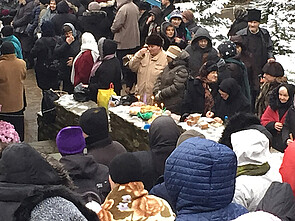
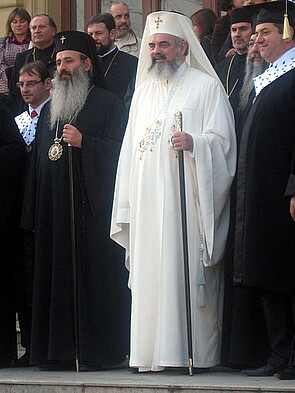
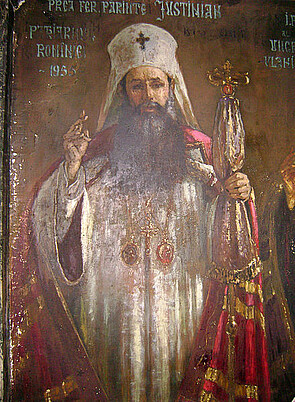
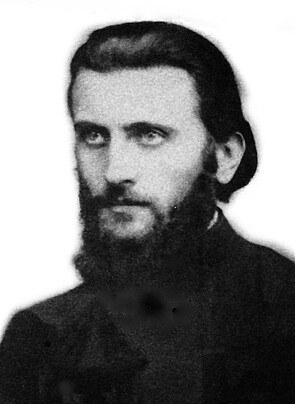

Lavinia Stan · 13.12.2019
The Băsescu Case: Romania's Lustration Debate Revisited
Read more
Raluca Grosescu · 17.01.2019
The Trials of the Romanian Revolution
Read more
Oana-Valentina Suciu · 12.09.2017
'Lex CEU': Romanian Echoes and Trends
Read more
Bogdan C. Iacob · 07.05.2014
Romania - The Scramble for the Present: Making Sense of the Crisis in Ukraine
Read more
Gundel Große · 02.09.2013
Romanian Writers and the Securitate. Excerpts from a Debate
Read more
Get this article as PDF download (including pictures).